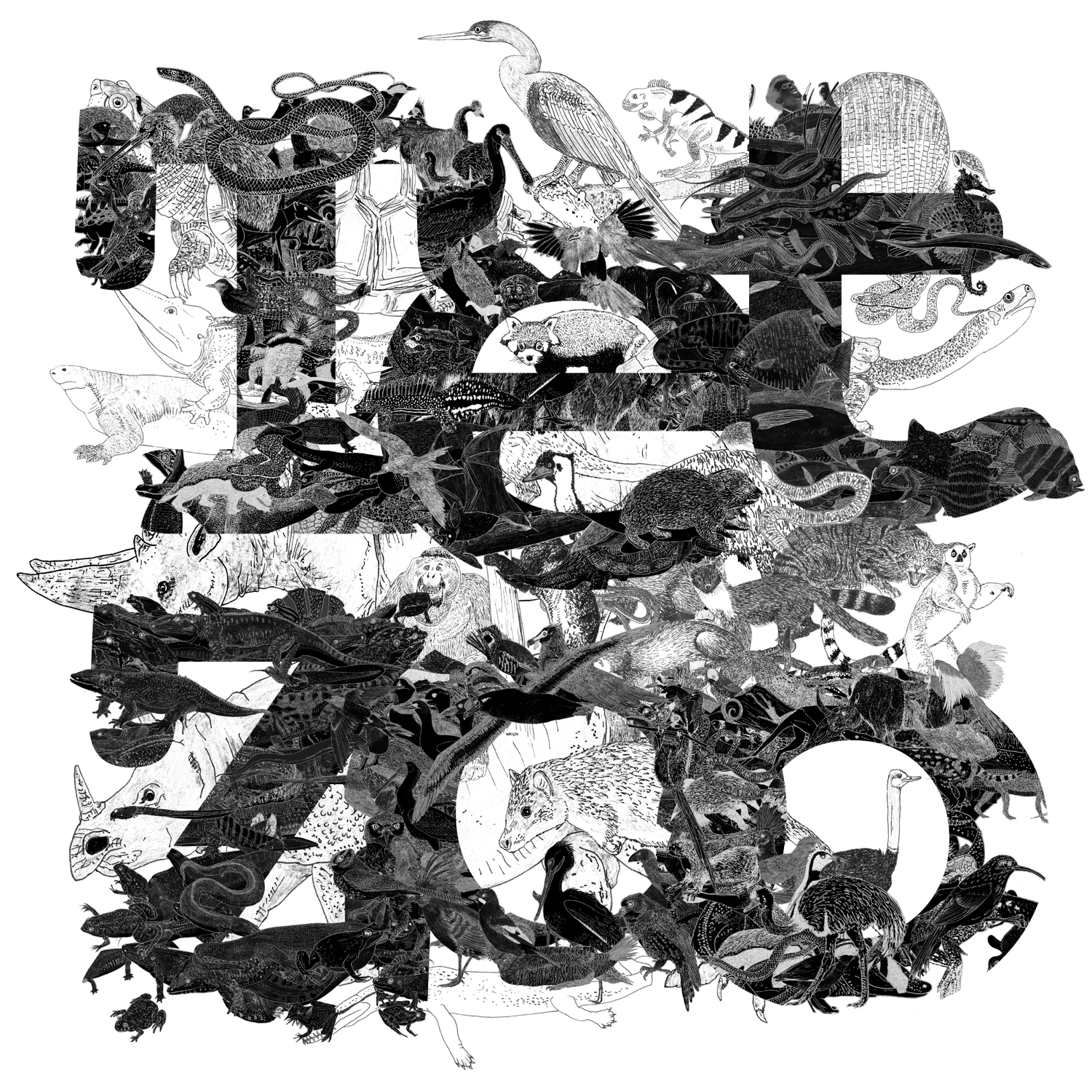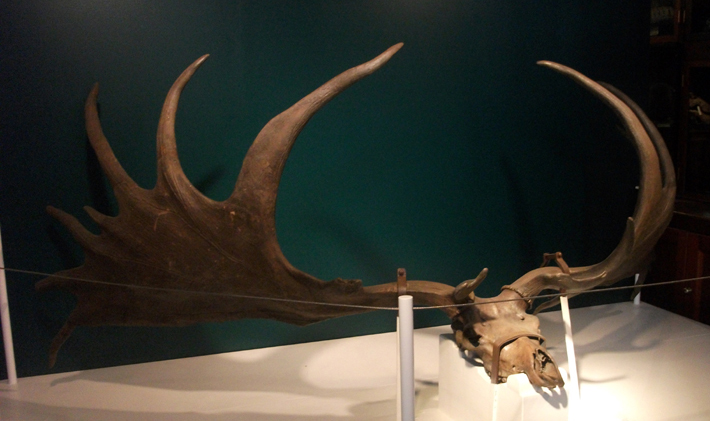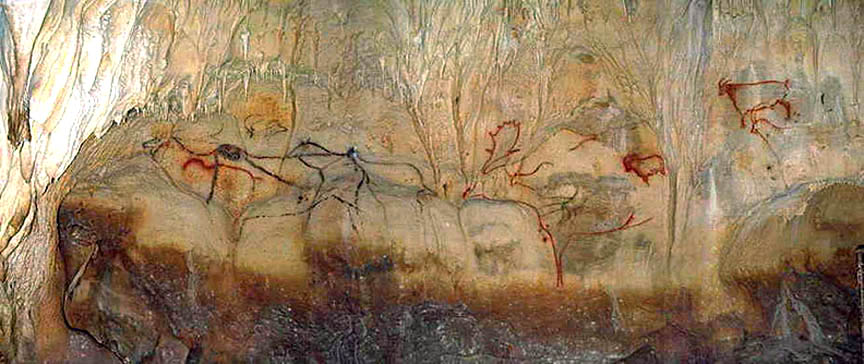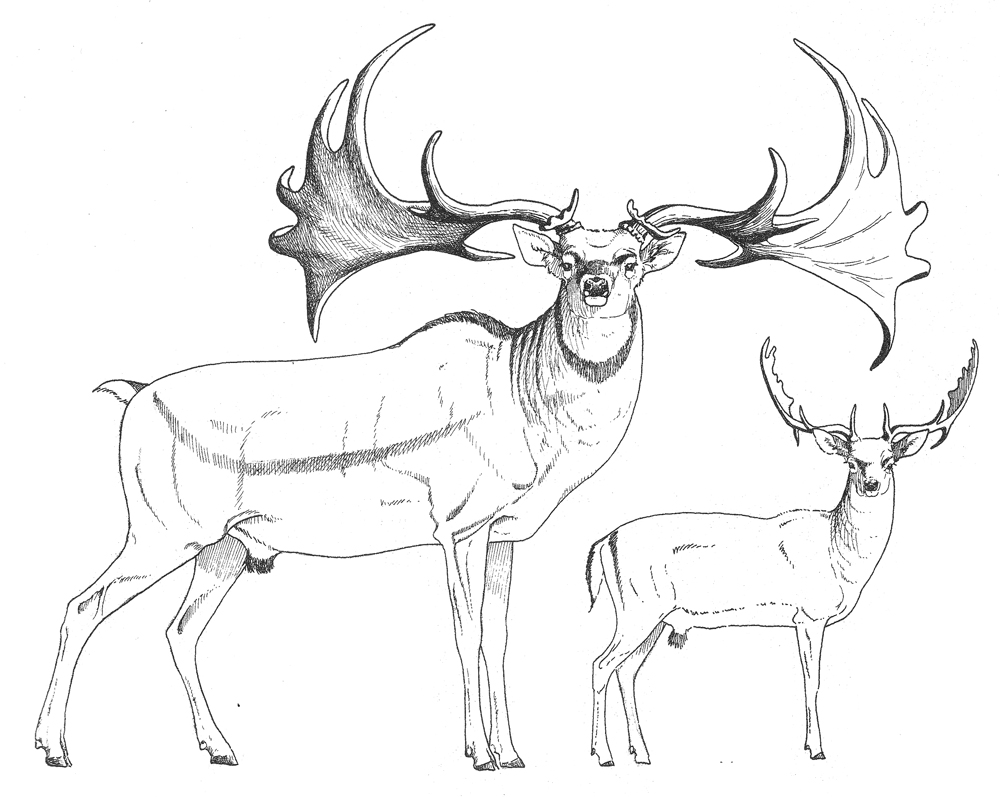As a regular TetZoo reader, you’ll no doubt be aware of Tapirus kabomani, the (alleged) new South American tapir species named by Mario Cozzuol and colleagues in 2013 (Cozzuol et al. 2013).
Caption: Tapirus… poster-child for TetZoo Park. Image: Patrick Murphy.
T. kobamani – popularly termed simply the Kabomani tapir (the names Little black tapir or Black dwarf tapir are also available; read on) – was described as smaller and darker than other South American tapirs, and as possessing a few distinctive osteological features, like a broad forehead and frontal bones that are more inflated than those of other tapirs. Its validity as a distinct species is, however, controversial, as we’ll see.
Caption: there’s TetZoo HAVE YOU HEARD ABOUT THE NEW TAPIR merchandise. Go here.
I wrote about the initial naming and description of T. kabomani back here at TetZoo ver 3 (warning: now paywalled). Immediately there was a reasonable amount of scepticism from other zoologists familiar with tapirs and their biology, distribution and systematics – many of whom argued that T. kabomani was similar enough to the Brazilian or Lowland tapir T. terrestris to be considered conspecific with it – and also a claim that exactly the same sort of tapir had already been described by another zoologist (namely, Marc van Roosmalen).
Caption: one of several T. kabomani images captured by remote cameras: from Cozzuol et al. (2013). Image: Cozzuol et al. (2013).
But what has happened since 2013? Well, quite a bit: several studies evaluating the status of T. kabomani have been published since Cozzuol et al.’s initial paper of 2013. What do these various studies state, and what do they conclude? Let’s look at each of the studies in turn. I’ve done my best to summarise the relevant papers, and to keep my summaries brief.
As noted above, Marc van Roosmalen has been stating right from the time that kabomani was first described that it is identical with another alleged small tapir – T. pygmaeus, termed the Black dwarf tapir by van Roosmalen – that he named (online) in 2002, briefly diagnosed and described in popular books of 2008 and 2013, and formally published within a section of another book of 2013 (Van Roosmalen & Van Hooft 2013). Van Roosmalen (2014) petitioned the ICZN (case 3650) to have the 2013 book in question – Barefoot Through the Amazon – On the Path of Evolution – registered as part of the ‘Official List of Works Approved as Available for Zoological Nomenclature’, and thus to have T. pygmaeus endorsed as a valid, official name with priority over T. kabomani. A ruling on this proposal has not been made, to my knowledge. Van Roosmalen again stated his view that these two forms are synonymous in a 2015 publication (Van Roosmalen 2015).
Caption: the Black dwarf tapir, as illustrated in Marc van Roosmalen’s 2013 book. Image: van Roosmalen (2013).
Robert Voss et al. (2014) were highly critical of Cozzuol et al.’s (2013) case for the validity of T. kabomani, literally starting their paper with reference to Carl Sagan’s aphorism that “extraordinary claims require extraordinary evidence” (p. 893). To be honest, I’m not sure that the reporting of a new species of tapir is as extraordinary as they think it is but… whatever, they argued that none of the molecular, morphological or ethnological evidence compiled by Cozzuol et al. (2013) withstood scrutiny. Their most interesting contention was that kabomani is not ‘distinct enough’ from T. terrestris to warrant species-level separation (the sequence divergence in Cytb amounting to 1.3%), and that both T. kabomani and the Mountain or Woolly tapir T. pinchaque are not phylogenetically separate from T. terrestris, both failing to be recovered as reciprocally monophyletic (Voss et al. 2014). Remember that this affects T. pinchaque as well as T. kabomani: we’ll be coming back to that point.
Caption: this section of Voss et al.’s (2014) molecular phylogeny shows T. pinchaque and T. kabomani as poorly differentiated from T. terrestris. Image: Voss et al. (2014).
Mario Cozzuol et al. (2014) published a response to Voss et al. (2014). With regard to Voss et al.’s (2014) contention (“Have several generations of Neotropical mammalogists really failed to recognise a species of Recent megafauna that is said to be widely distributed in Amazonia?”), their specific response was: “The answer is, simply, yes. Specifically, they failed, as many others have done for many years, to listen to the local people more carefully; those people have been aware of the existence of this species for a long time” (p. 899). Cozzuol et al. (2014) re-iterated their view that kabomani is morphologically distinct (they noted in particular its sagittal crest), and that it is recognised as distinct by various Amazonian peoples. Regarding Voss et al.’s (2014) finding that kabomani is nested within T. terrestris, Cozzuol et al. (2014) reported that different molecular trees were recovered depending on which tapir taxon was used as the outgroup, and that the nesting of kabomani within T. terrestris did not disprove its status as a distinct species given that T. pinchaque (the Mountain tapir, universally regarded as a distinct species) was found to be intractable from the terrestris-kabomani clade based on genetic data (Cozzuol et al. 2014).
Caption: portrait of T. kabomani, produced by G. Braga to accompany Cozzuol et al.’s (2013) original paper. Image: Cozzuol et al. (2013).
Manuel Ruiz-García et al. (2015) examined mitochondrial gene diversity across all South American tapirs, their aim being to better understand the genetic history of the group and thus its evolution, systematics and conservation biology. They included data from five kabomani specimens: two were the Brazilian specimens analysed by Cozzuol et al. (2013), and the others were individuals from Colombia, Peru and Ecuador (Ruiz-García et al. 2015). They found kabomani tapirs to be “more closely related to T. terrestris than to the other tapir species”, reported “significant differences with [DN – I think they meant ‘from’] T. terrestris as well as with [DN – surely ‘from’] T. pinchaque” (p. 11), but overall found kabomani tapirs to “yield lower genetic distances with regard to T. terrestris than did T. pinchaque” (p. 14). In other words, kabomani tapirs were not – in their view – genetically ‘distinct enough’ to warrant species status and should more reasonably be considered a distinct population of T. terrestris. This view was modified later in the text where they specifically stated (and depicted) kabomani tapirs as a clade within T. terrestris, the divergence of the kabomani lineage being suggested to have occurred between 1.3 million and 360,000 years ago (p. 18). Such a divergence date is young relative to other divergences between extant tapir species (some of you might recall date of divergence being deemed relevant in the debate surrounding white rhino phylogeny and taxonomy). These authors also provided a lengthy critique of anatomical criteria used by Cozzuol et al. (2013) to differentiate T. kabomani, arguing that some ‘kabomani-type’ tapirs did not have the morphological features supposedly diagnostic for this taxon, and furthermore than some small, ‘kabomani-type’ animals are not of the genetic kabomani group. Bottomline: kabomani “is a particular lineage within T. terrestris” (p. 34), and it is not morphologically well differentiated from the rest of T. terrestris, some other populations of which look kabomani-like.
Caption: Ruiz-García et al.’s (2015) maximum likelihood tree, incoporated mitochondrial gene data for 93 tapir specimens. T. pinchaque is blue, T. terrestris is red, T. kabomani is green, and T. bairdii is purple. Note that kabomani is nested within T. terrestris. Image: Ruiz-García et al.’s (2015).
Dumbá et al. (2018) analysed skull shape variation in living tapir species (though they also included a few fossil ones too), and specifically analysed kabomani. They found kabomani skulls to have some overlap in morphospace with T. terrestris though noted that both could still be distinguished, in part because of kabomani’s broad forehead. In some landmark-based analyses, the kabomani sample overlapped almost entirely with the region of morphospace occupied by T. terrestris. The assumption of this study appears to be that kabomani is distinct and only similar to T. terrestris when certain sets of cranial landmarks are used (note that Mario Cozzual is the study’s last author). Another interpretation could be that kabomani overlaps so extensively with T. terrestris that it should be regarded as a poorly differentiated ‘extension’ of the morphospace occupied by T. terrestris.
Caption: the landmark-based morphometric work published recently by Dumbá et al. (2018) shows T. kabomani to overlap quite extensively with the morphospace occupied by T. terrestris. Image: Dumbá et al. (2018).
What, then, to conclude? By now you’ve surely heard, on a great many occasions, the contention that the entities we call ‘species’ do not have a consistent, well defined definition across all tetrapods, let alone across all animals or all organisms. Whether a given population warrants recognition as a ‘species’ is still, to some considerable degree, a subjective issue. Having gotten that caveat out of the way, most (note: most) mammalogists would agree that the minor molecular and morphological differences separating the Kabomani tapir from T. terrestris are not compelling, and it does appear most likely that it is a variant, morph or lineage of T. terrestris. However…
Caption: the Mountain or Woolly tapir was posited by Cozzuol et al. (2013) as closer to T. terrestris than is T. kabomani, but the inverse was recovered by Ruiz-García et al. (2015). Image: Just Chaos, CC BY-SA 2.0 (original here).
Problem 1: Voss et al.’s (2014) initial claim that the Mountain tapir is as much as part of T. terrestris as is kabomani was always problematic. After all, everyone agrees that the Mountain tapir should be retained as a valid species; if the Mountain tapir were to be regarded as part of T. terrestris, people would likely use special pleading to keep it distinct… which would, in turn, then negate the claim that kabomani was not worthy of species status. However, the more comprehensive analysis compiled by Ruiz-García et al. (2015) seems to have resolved this issue. Problem 2: the implication that the recovery of kabomani as a lineage within T. terrestris automatically negates its status as a species is not entirely fair or technically correct, since there are a great many animal populations we term ‘species’ that are not monophyletic and/or not outside other populations also termed ‘species’. A classic example is the Polar bear Ursus maritimus (generally found in studies to be nested within the Brown bear U. arctos.) but there are many, many others. In other words, finding kabomani to be a lineage within T. terrestris does not automatically negate a species-level status. But is it ‘distinct enough’ to be regarded as a ‘species’ all its own? My conclusion from all the work discussed above: no, no it is not, alas.
Caption: Tapirus terrestris is a pretty variable animal, seemingly with a complex evolutionary history and a degree of morphological variation that’s only now beginning to come to light. This captive individual is from Chester Zoo, UK. Image: Darren Naish.
And that is where we end for now. Tapirs have been covered quite a few times on TetZoo now, though once again I will note that many of the articles concerned are now paywalled due to a recent decision made at Scientific American blogs. If you can access them, the articles are here…
Multiple new species of large, living mammal (part I), June 2007
Because you can never have too many tapirs, September 2009
The biggest tapir, September 2009
Tapir attacks past, present, but hopefully not future, August 2013
A new living species of large mammal: hello, Tapirus kabomani!, December 2013
World Tapir Day, 2015, April 2015
On World Tapir Day, a Quick Look at (Part of) Tapir History, April 2016
Refs - -
Cozzuol , M. A., Clozato, C. L. , Holanda, E. C., Rodrigues, F. H. G., Nienow, S., de Thoisy, B., Redondo, R. A. F. & Santos, F. R. 2013. A new species of tapir from the Amazon. Journal of Mammalogy 94, 1331-1345.
Cozzuol, M. A., de Thoisy, B., Fernandes-Ferreira, H., Rodrigues, F. H. G. & Santos, F. R. 2014. How much evidence is enough evidence for a new species? Journal of Mammalogy 95, 899-905.
Dumbá, L. C. C. S., Parisi Dutra, R. & Cozzuol, M. A. 2018. Cranial geometric morphometric analysis of the genus Tapirus (Mammalia, Perissodactyla). Journal of Mammalian Evolution https://doi.org/10.1007/s10914-018-9432-2
Ruiz-García, M., Castellanos, A., Agueda Bernal, L., Navas, D., Pinedo-Castro, M. & Mark Shostell, J. 2015. Mitochondrial gene diversity of the mega-herbivorous species of the genus Tapirus (Tapiridae, Perissodactyla) in South America and some insights on their genetic conservation, systematics and the Pleistocene influence on their genetic characteristics. Advances in Genetic Research 14, 1-51.
Van Roosmalen, M. G. M. 2014. Case 3650: Tapirus pygmaeus Van Roosmalen & Van Hooft in Van Roosmalen, 2013 (Mammalia, Perissodactyla, TAPIRIDAE): proposed confirmation of availability of the specific name and of the book in which this nominal species was proposed. Bulletin of Zoological Nomenclature 71, 84-87.
Van Roosmalen, M. G. M. 2015. Hotspot of new megafauna found in the Central Amazon (Brazil): the lower Rio Aripuanã Basin. Biodiversity Journal 6, 219-244.
Van Roosmalen, M. G. M. & Van Hooft, P. 2013. New species of living tapir, the dwarf tapir (Mammalia: Tapiridae) from the Brazilian Amazon, in Van Roosmalen, M. G. M. (ed), Barefoot Through the Amazon – On the Path of Evolution. CreateSpace, North Charleston SC, pp. 400-404.
Voss, R. S., Helgen, K. M. & Jansa, S. A. 2014. Extraordinary claims require extraordinary evidence: a comment on Cozzuol et al. (2013). Journal of Mammalogy 95, 893-898.

























